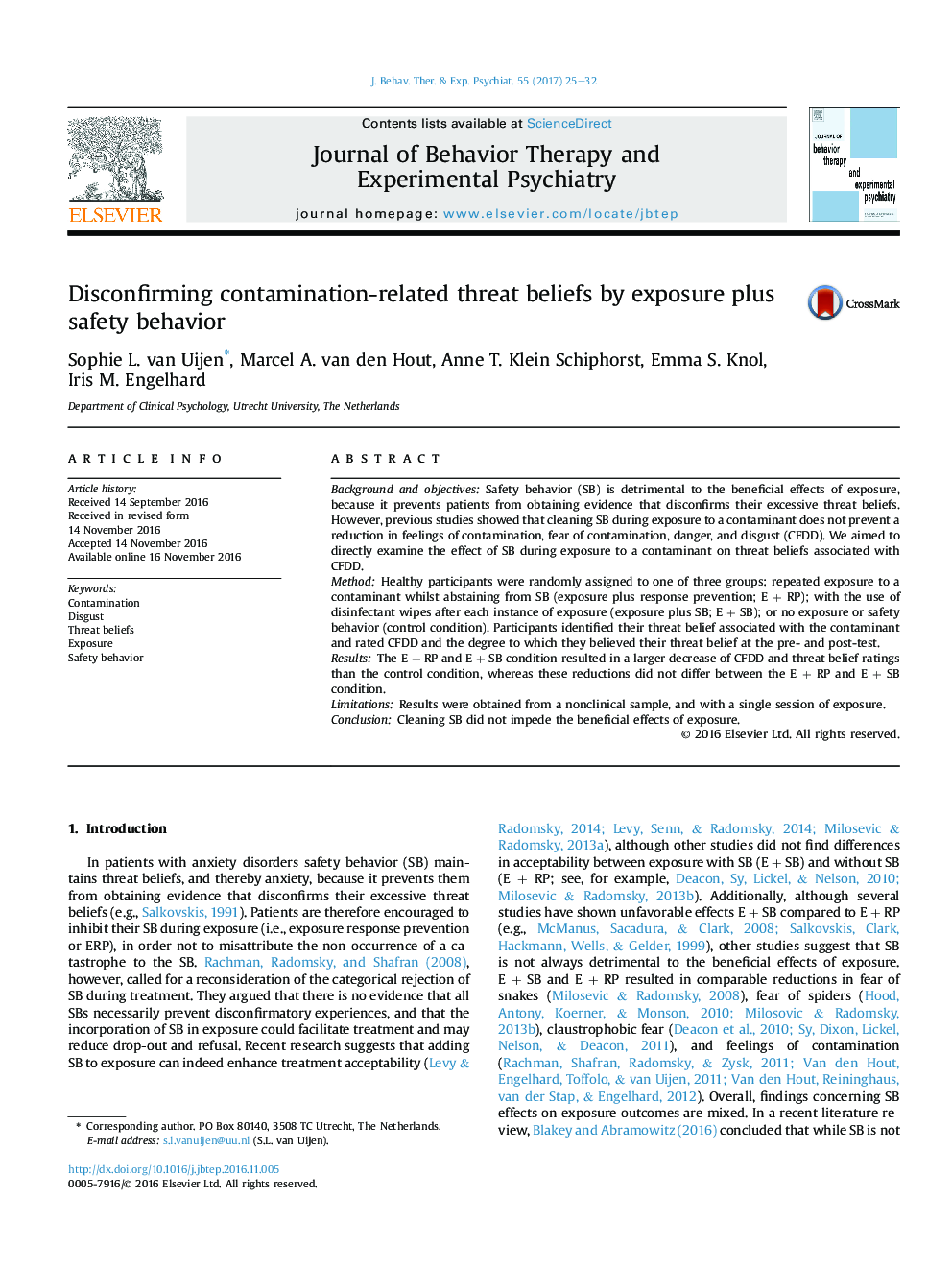| Article ID | Journal | Published Year | Pages | File Type |
|---|---|---|---|---|
| 5039049 | Journal of Behavior Therapy and Experimental Psychiatry | 2017 | 8 Pages |
â¢Exposure with safety behavior decreased contamination, fear, danger, and disgust.â¢Exposure with safety behavior decreased threat beliefs.â¢Exposure with safety behavior and exposure response prevention had similar effects.â¢Within-trial returns of emotional responses did not prevent over-trial reductions.
Background and objectivesSafety behavior (SB) is detrimental to the beneficial effects of exposure, because it prevents patients from obtaining evidence that disconfirms their excessive threat beliefs. However, previous studies showed that cleaning SB during exposure to a contaminant does not prevent a reduction in feelings of contamination, fear of contamination, danger, and disgust (CFDD). We aimed to directly examine the effect of SB during exposure to a contaminant on threat beliefs associated with CFDD.MethodHealthy participants were randomly assigned to one of three groups: repeated exposure to a contaminant whilst abstaining from SB (exposure plus response prevention; EÂ +Â RP); with the use of disinfectant wipes after each instance of exposure (exposure plus SB; EÂ +Â SB); or no exposure or safety behavior (control condition). Participants identified their threat belief associated with the contaminant and rated CFDD and the degree to which they believed their threat belief at the pre- and post-test.ResultsThe EÂ +Â RP and EÂ +Â SB condition resulted in a larger decrease of CFDD and threat belief ratings than the control condition, whereas these reductions did not differ between the EÂ +Â RP and EÂ +Â SB condition.LimitationsResults were obtained from a nonclinical sample, and with a single session of exposure.ConclusionCleaning SB did not impede the beneficial effects of exposure.
